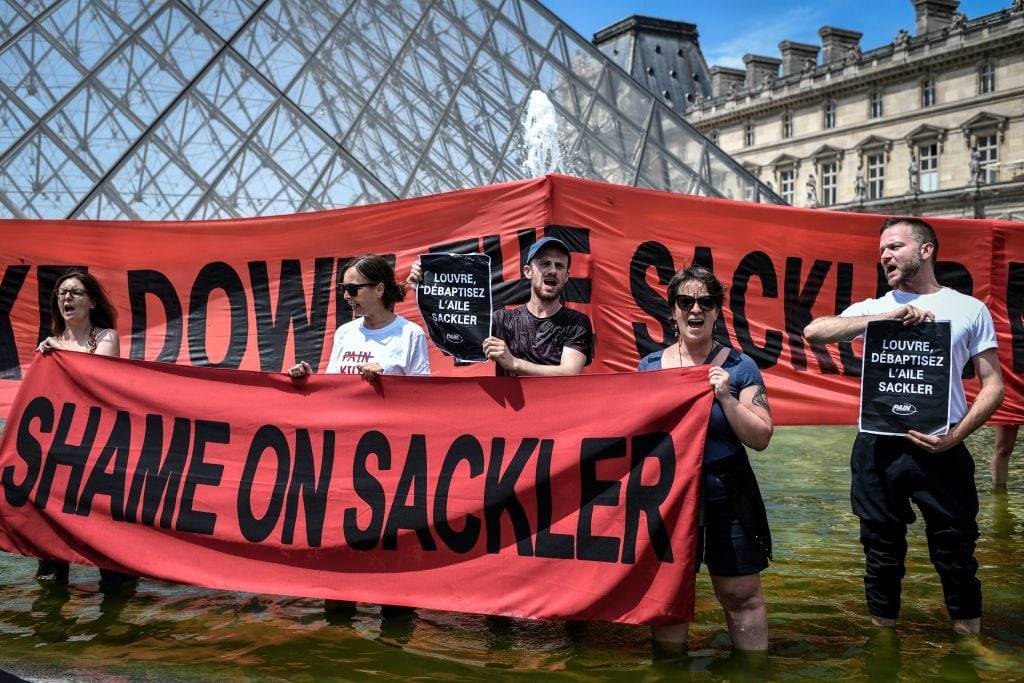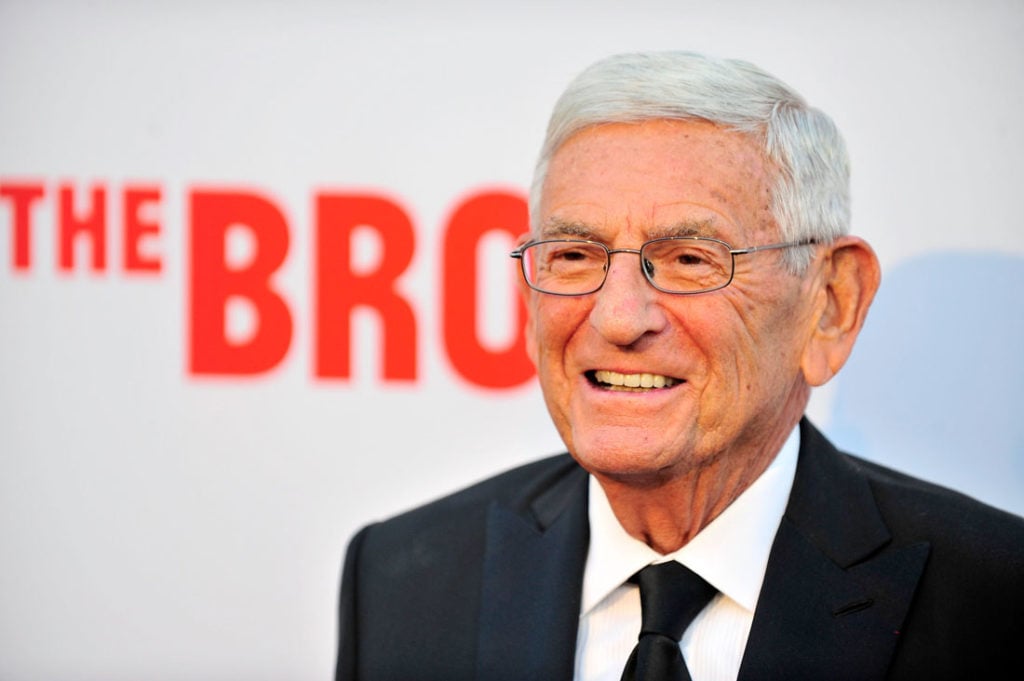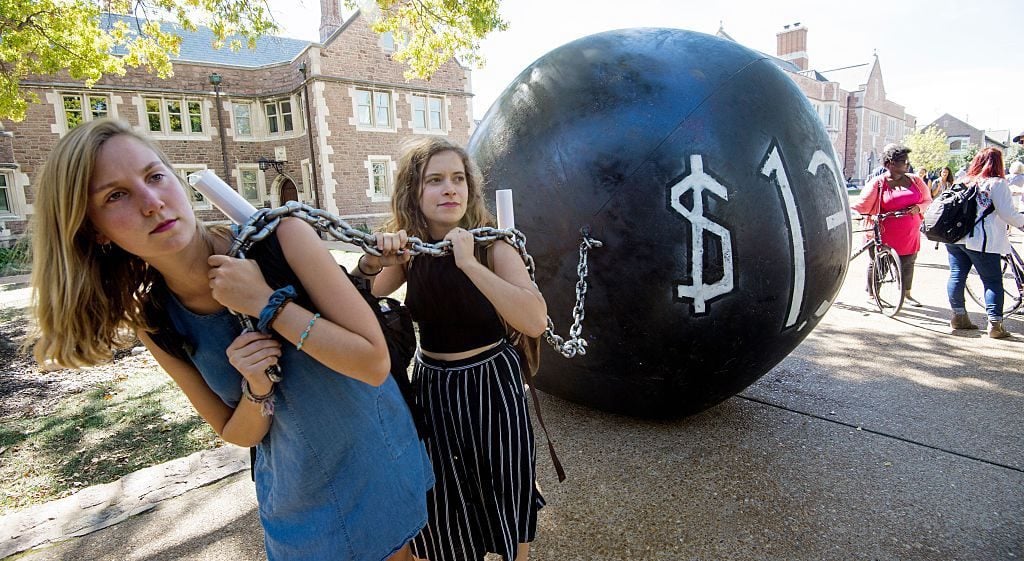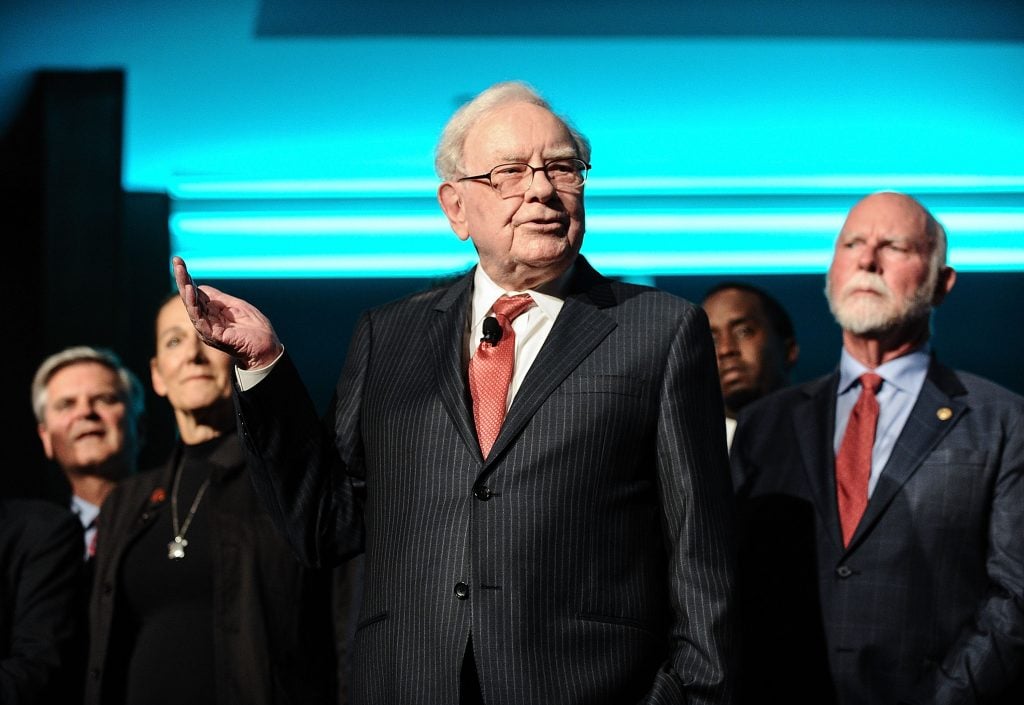Every Wednesday morning, Artnet News brings you The Gray Market. The column decodes important stories from the previous week—and offers unparalleled insight into the inner workings of the art industry in the process.
This week, how the top of the ladder has taken the art world sideways…
HEEL TURN
On Sunday, journalist and author Anand Giridharadas delivered a scalding rebuke of the pinnacle of the U.S. donor class in the New York Times. While mega-philanthropy takes the brunt of the heat, his argument also carries implications for the for-profit side of a polarized art market. The full scope of his analysis clarifies once again how the economics that define the culture business proceed from policy choices made on a much larger canvas.
At the center of Giridharadas’s sights is Berkshire Hathaway C.E.O. Warren Buffett, the apotheosis of what he calls the “Good Billionaire” myth. In Giridharadas’s telling, the myth holds that America’s largest problem today is only the abuse of its economic system by a few galactically wealthy bad actors, not the design of the system itself. When top earners just behave with a shred of dignity and fellow feeling for the rest of society, everyone prospers together.
Buffett has long seemed the best evidence for these beliefs. He comes across as humble, uninterested in wealth, and even welcoming of common-sense reforms that would reduce the net worth of his billionaire peers.
Giridharadas reminds us that then-President Barack Obama named a modest wealth-tax proposal in honor of Buffett, who has frequently railed against the unfairness of a system that allows him to pay a lower proportional tax burden than basically everyone who works for him. He is among the founding billionaires behind the Giving Pledge, the pact in which each signatory commits to donating at least half of their wealth to nonprofit causes before the hearse pulls up. He has lived his entire adult life in Omaha, Nebraska, for crying out loud. How much more down-to-earth could a billionaire get?
Buffett may be the prototype of the virtuous plutocrat, but he’s not alone. Bill Gates has transformed in the public imagination from ruthless software monopolist to benevolent vax daddy of low-income countries. Michael Bloomberg is regularly lionized (even in the past by me) for the millions he gives to cultural and climate nonprofits annually. The latter two characters may come off as less aw-shucks than Buffett, but their examples still seem to suggest mega-wealth delivers society a great good when the right people are involved.
Giridharadas, however, argues that this is all crap—a grand smokescreen perpetuated by the most powerful to keep everyone else ripe for exploitation. He writes:
There is no way to be a billionaire in America without taking advantage of a system predicated on cruelty, a system whose tax code and labor laws and regulatory apparatus prioritize your needs above most people’s. Even noted Good Billionaire Mr. Buffett has profited from Coca-Cola’s sugary drinks, Amazon’s union busting, Chevron’s oil drilling, Clayton Homes’s predatory loans and, as the country learned recently, the failure to tax billionaires on their wealth.
That last sentence refers to both some of Buffett’s investments and, more importantly, a scorching investigation published last week by ProPublica. Using leaked tax records, it didn’t just show that the very wealthiest Americans have been paying meager amounts of federal income tax—and sometimes, none at all—for years, or that the billionaires in question have done so over and over again by completely legal means. It also showed that some of the most cunning plutocrats have been the ones often portrayed as the most virtuous.
(If you’re curious about how they’re pulled it off, the answer is by taking meager annual salaries—Amazon, for instance, paid its C.E.O. Jeff Bezos less than $82,000 annually—while taking out a cascading series of low-interest loans against their stocks and other assets, which generate no taxable income until they’re sold. Here’s a good explainer.)
Buffett’s folk hero persona did not stop him from leveraging this loophole for all it was worth. According to ProPublica, he paid a “true tax rate” of just .1 percent on the $24.3 billion he added to his net worth between 2014 and 2018. Bloomberg managed to pay only slightly more than Buffett during the same span: a 1.3 percent true tax rate on a gain of $22.5 billion. (In statements to ProPublica, both men emphasized that they paid the maximum amount of taxes owed.)
So what does this have to do with the art business? I’m glad you asked.

Activists of P.A.I.N. (Prescription Addiction Intervention Now) protest the Sacklers at the Louvre. Photo by Stephane de Sakutin/AFP/Getty Images.
GIVE AND TAKE
The term “artwashing” is normally only associated with cultural philanthropy doled out by plutocrats whose wealth can be traced to businesses or products that do direct harm to vulnerable populations. From mass-manufacturing opioids (see: the now-in-the-penalty-box Sackler family), to peddling tear gas (see: former Whitney Museum trustee Warren Kanders), to charging extortionate rates for phone time with incarcerated loved ones (see: former Los Angeles County Museum of Art trustee Tom Gores), it has not been hard in recent years to view plenty of high-dollar giving to arts organizations as outright plunder.
Yet Giridharadas’s point is that “actually malevolent and disastrously negligent plutocrats” are not the only ones to blame for our wealth-stratified, winner-takes-all society. They just make it easier for the rest of the superrich to hide their ill effects on modern life. In fact, the Good Billionaires are actually the “most dangerous,” because they preserve the fantasy that the structure of the U.S. economy is sound and fair when in reality the foundation has been cracked and crumbling for decades.
Mega-philanthropy, Giridharadas argues, has been the most effective camouflage for the damage. Set aside the gifts made by clean-conscience donors who would be unaffected by Senator Elizabeth Warren’s proposed “ultra-millionaire tax” on fortunes above $50 million. What makes donations from “supposed Good Billionaires” like Buffett and Bill Gates more insidious than donations made by “the crooks and the scoundrels and the people manifestly looking for quick P.R. highs” is that they give so much more—and are so much better at weaving a righteous narrative around those gargantuan gifts thanks to their spotless public images.
This also means the Good Billionaires can keep pillaging the economy with little public scrutiny landing on either their own revenue streams or the system irrigating them. Giridharadas notes that in Buffett’s strenuous defense of his tax history, the Oracle of Omaha suggests his large-scale charitable giving does more for the commonwealth than robust payments to the federal government ever could. “I believe the money will be of more use to society if disbursed philanthropically than if it is used to slightly reduce an ever-increasing U.S. debt,” Buffett wrote.
Of course, his framing abstracts that the “ever-increasing U.S. debt” is a bill for actual stuff—some of which people need, and some of which they don’t. On one hand, it includes stimulus payments and enhanced unemployment benefits shown to have “substantially reduced hardship” during the Great Shutdown, as well as a minuscule amount of federal arts funding. On the other hand, it also includes regime after regime of tax cuts disproportionately benefiting a donor class that needed no extra help, as the ProPublica investigation reinforced.
This is the ultimate irony of Buffett’s defense: if Uncle Sam was more committed to making the wealthiest plutocrats pay their fare share to support the systems that helped make them so rich, the debt wouldn’t be so big! But it is—and part of the reason is that it has been spraying Good and Bad Billionaires alike with cash they didn’t need, some portion of which they went on to parcel out to nonprofits that were all the more grateful for the private largesse precisely because public funding has been reduced by the decline in tax revenues collected.

Eli Broad. Courtesy of Getty Images.
THE GIVING TREE
Giridharadas’s piece and the ProPublica report were both preceded by the themes in Carolina Miranda’s skeptical Los Angeles Times analysis of the supposed philanthropic void that would be created by this year’s death of mega-collector and arts patron Eli Broad.
Aside from reinforcing to the East Coast media that L.A. has supported a thriving cultural scene for a century (and even out-donated New York in multiple recent studies), she implored the world to “retire the outmoded idea that the most important factor in a city’s cultural landscape is the presence of some white knight bearing a checkbook and grandiose ideas about turning bulldozed Los Angeles neighborhoods into the Champs-Élysées (as Broad once described his vision for Bunker Hill),” the slice of downtown where his namesake private museum now stands.
Like Giridharadas’s argument about Buffett, Miranda’s argument zeroes in on Broad to make a larger point. Even within the Los Angeles nonprofit scene, Broad’s record had pockmarks. She reminds readers that LACMA accused him of leaving the museum “holding the bag on $5.5 million in additional construction costs” for the building on its campus otherwise erected with his money and named in his honor. (A Broad spokesperson denied the charge.) He also refused to endow the structure, sticking LACMA with all bills for its upkeep, and then ultimately kept his collection so he could open his own institution.
The upshot? Mega-philanthropy isn’t all it’s cracked up to be, even when we restrict our view to the donors’ impact on their home cultural landscape.
The push for greater public funding of the arts in the U.S. has been gathering steam since last March’s lockdowns. (President Biden is receptive.) Miranda emphasizes multiple examples of robust, broad-based tax initiatives long ago implemented at the state and county levels, from Michigan to Colorado to Los Angeles. In that sense, there’s an argument the nonprofit culture sector could be at least as strong, if not stronger, after the tax code’s billionaire loopholes were closed.
I would also add that the for-profit art trade could benefit in a similar way from serious U.S. tax reform. Market participants have lamented for years that the middle-class collectors who once sustained a more equitable version of the industry have become an endangered species. Several factors contribute to the change, but many of the most significant are tied up in the larger economy—and all are impacted by the Good Billionaire myth.

Students pull a mock “ball and chain” representing the $1.4 trilling outstanding student debt outside the second presidential debate 2016. Image courtesy Paul J. Richards/AFP/Getty Images.
A recent piece in Bloomberg captured millennials’ generational struggle to build the type of wealth that many boomers took for granted. After adjusting for inflation, millennials paid about 50 percent more for college than boomers, and they face a median home price about 50 percent higher. Meanwhile, their wages have risen only 20 percent over the same span. (If you’re wondering who is driving up prices in the housing market, one big answer is private-equity firms, which have been fattening their portfolios with everything from single-family houses to trailer parks.)
The costs of simply getting by, let alone getting far enough ahead to collect art, have mounted too. Many U.S. employers offer fewer benefits than in the past, especially as gig work has replaced more traditional full-time and part-time jobs. Companies that provide healthcare, child care, and paid family leave are increasingly rare (particularly in the gallery sector). Starved of so much tax revenue from top earners, government has little capacity to fill the void with social welfare programs (though Biden’s stimulus bill aims to begin reversing the trend).
The U.S. wouldn’t have to become a mythical socialist utopia to fix this situation. Prior to Ronald Reagan’s 1986 tax reforms, the nation’s top marginal tax rate was 50 percent. Just as importantly, only since 1978 has investment income (capital gains) been taxed at more favorable rates than typical wage income.
Subsequent reforms have torqued the system further and further to the advantage of the mega-wealthy, eventually reaching the present-day scenario in which tax law requires Buffett and other billionaires to pay no more than a nominal amount to the common good. And all of it has been at least partly enabled by the philanthropic narrative that the superrich will take care of the rest of us, including when it comes to art and cultural spending.
The folly of that thinking has become clearer and clearer ever since the Great Recession, and the Great Shutdown has exacerbated it. From museums to galleries, from Warren Buffett to Eli Broad, the Good Billionaire myth has brought too many systems to a breaking point. How exactly we should move toward equitable, sustainable solutions is up for debate, but whether we truly need to is not.
[The New York Times]
That’s all for this week. ‘Til next time, remember: if you look around the room and can’t figure out who the sucker is, there’s a good chance the sucker is you.









